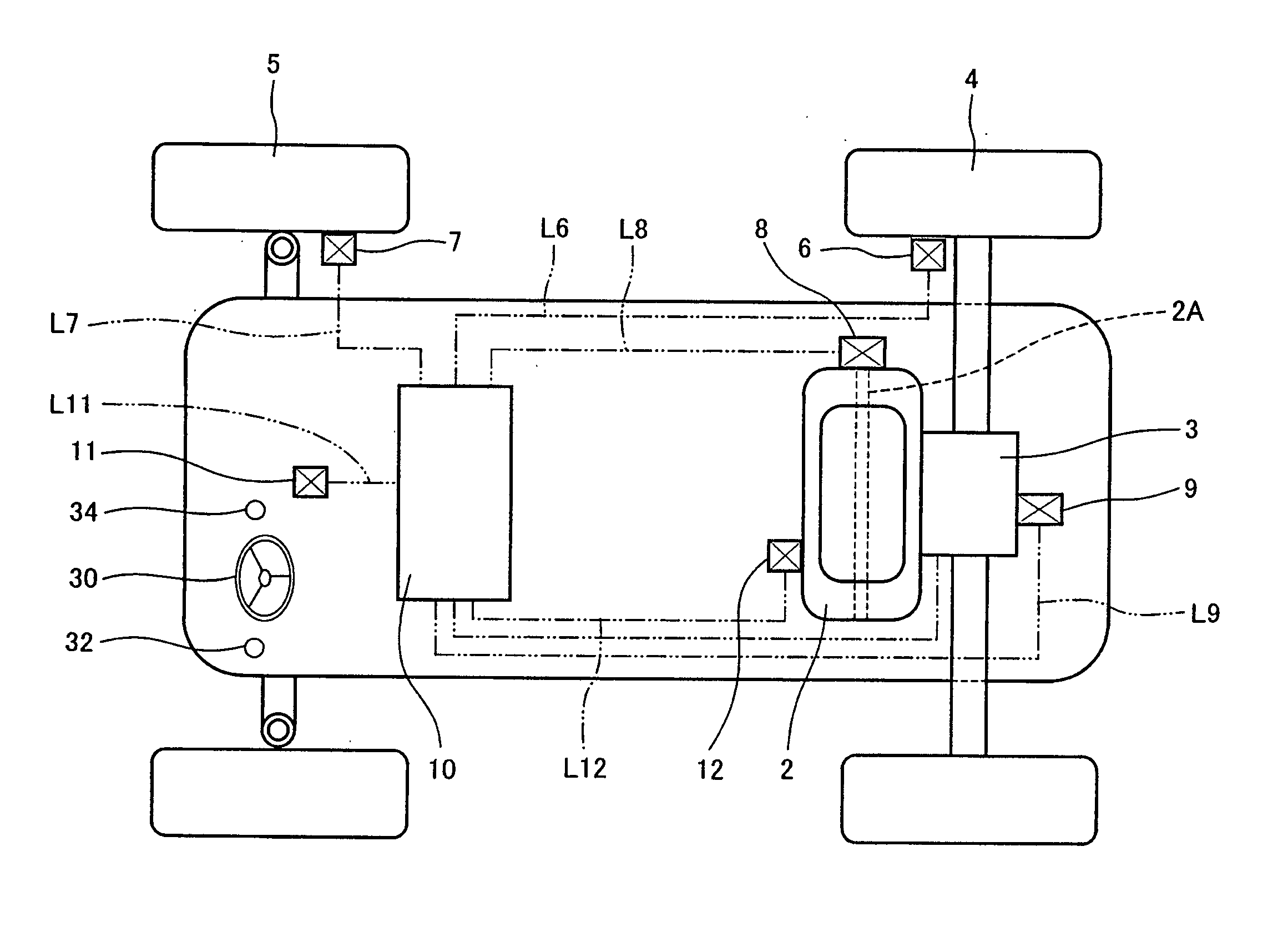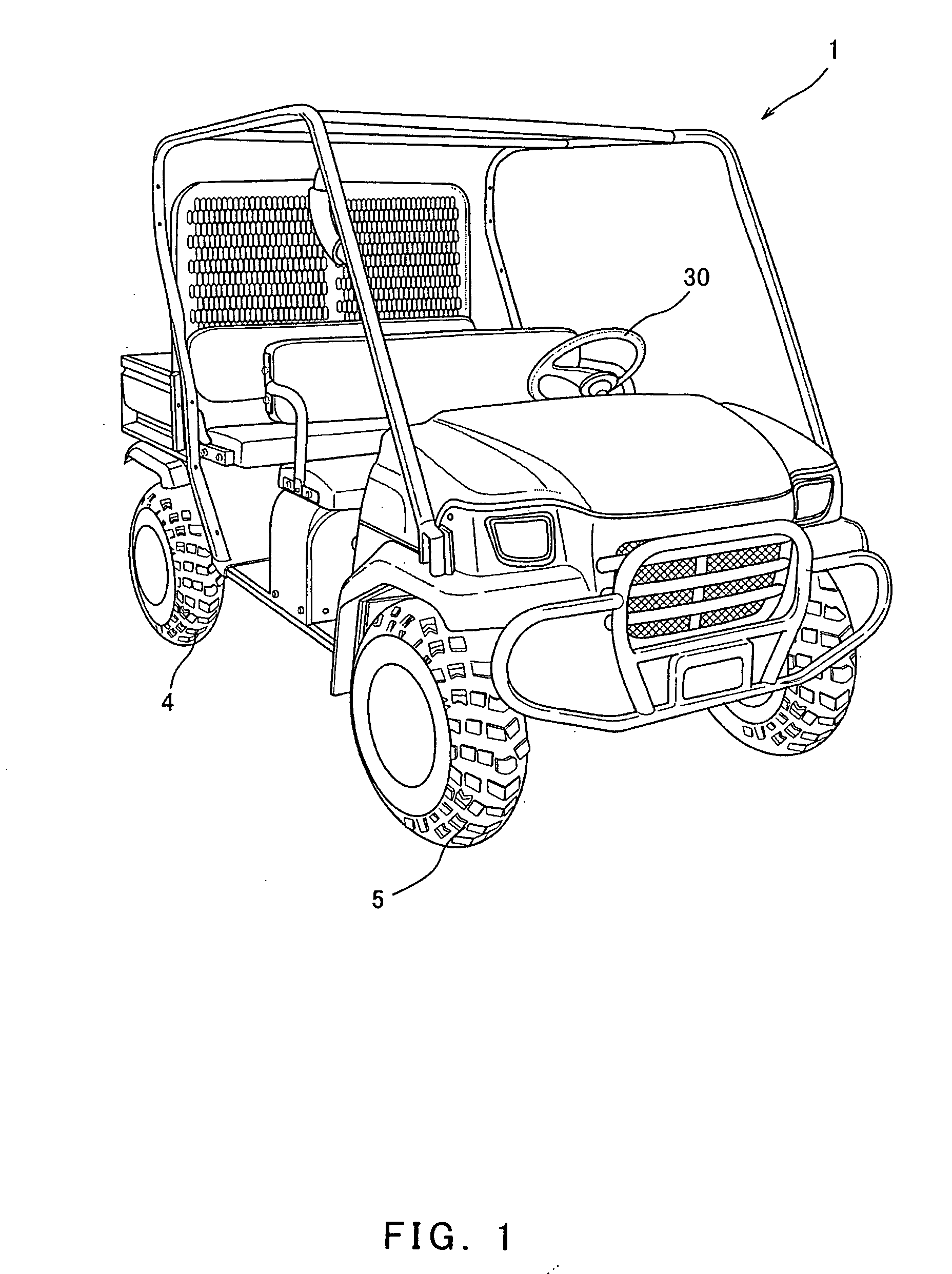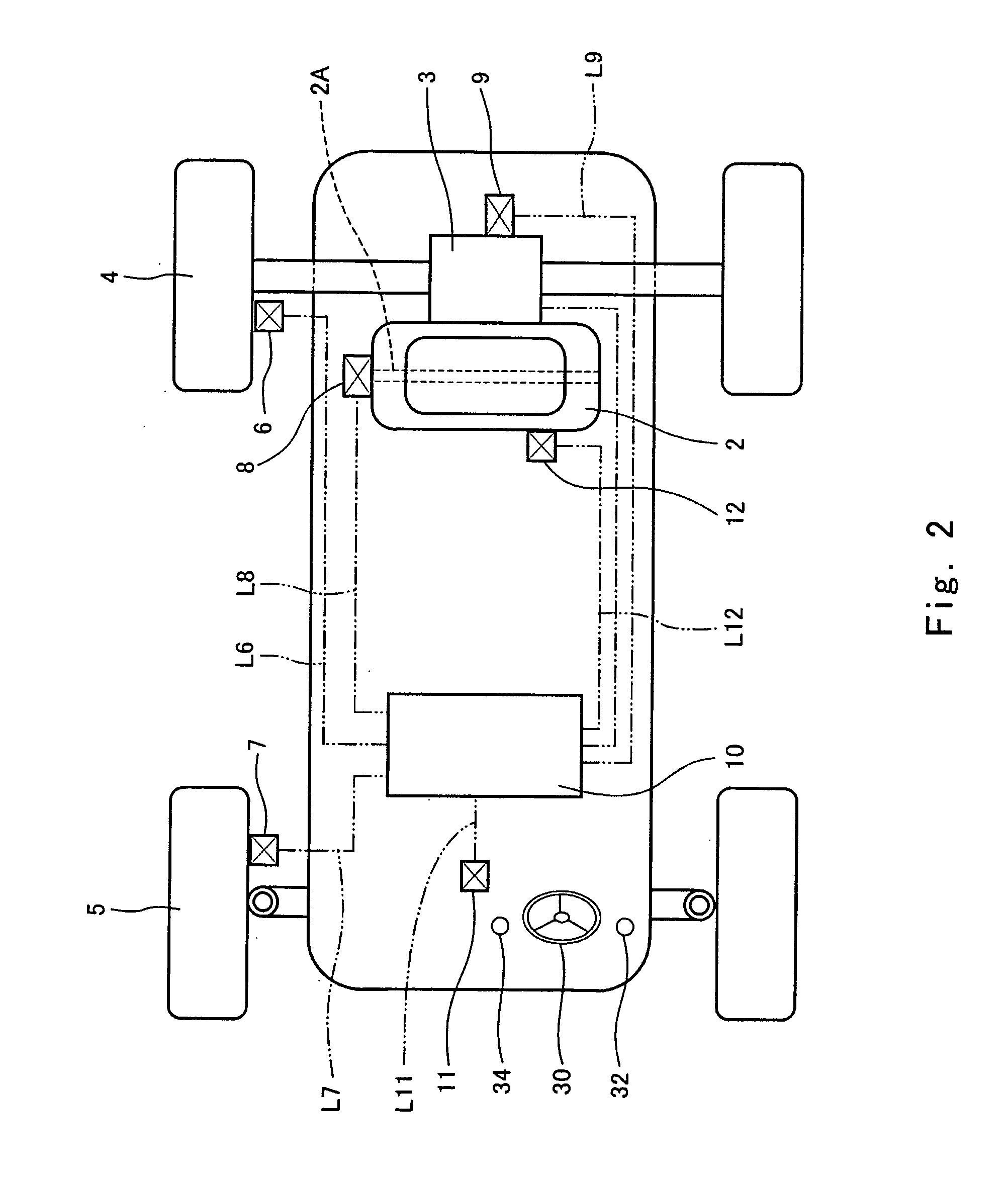Leisure vehicle
a technology for vehicles and sports, applied in the field of sports vehicles, can solve the problems of difficult to start or accelerate the vehicle, and achieve the difficulty of smooth start or smooth acceleration
- Summary
- Abstract
- Description
- Claims
- Application Information
AI Technical Summary
Benefits of technology
Problems solved by technology
Method used
Image
Examples
embodiment 1
[0026] Turning now to FIG. 1, a utility vehicle 1, which is one type of a leisure vehicle used for loading and unloading in farms or ranches, is shown. Turning to FIG. 1 or 2, a drive force from an internal combustion engine (hereinafter simply referred to as an engine) 2, which is a power unit, is transmitted to rear wheels 4 which are drive wheels. The drive force is transmitted through a transmission 3 to drive the rear wheels 4, enabling the utility vehicle 1 to drive. The transmission 3 has a plurality of gear positions. A steering handle 30 is mounted in a driver's seat section and is rotated clockwise or counterclockwise within a predetermined angular range to steer front wheels 5 which are non-drive wheels (free wheels) to change a running direction freely.
[0027] A drive wheel rotational speed sensor unit 6 is attached to the rear wheel 4 and is configured to detect a rotational speed of the rear wheel 4. A non-drive wheel rotational speed sensor unit 7 is attached to the f...
embodiment 2
[0048] In a second embodiment, the controller 10 detects the rotational speed of the front wheel 5 which is the non-drive wheel and the rotational speed of the rear wheel 4 which is the drive wheel from the non-drive wheel rotational speed sensor unit 7 and the drive wheel rotational speed sensor unit 6, respectively, and increases the engine speed at a predetermined rate, for example, 20 revolutions per second when a ratio of the rotational speed of the rear wheel 4 to the rotational speed of the front wheel 5 (rotational speed of the rear wheel 4 / rotational speed of the front wheel 5) is smaller than a predetermined value, for example, 1.05. On the other hand, when the ratio of the rotational speed is the predetermined value or larger, for example, 1.05 or larger, the controller 10 determines that the rear wheel 4 has slipped in a predetermined amount or more, and decreases the engine speed so that the ratio of the rotational speed of the rear wheel 4 to the rotational speed of th...
embodiment 3
[0049] The controller 10 may increase or decrease the engine speed so as to correspond to the ratio of the rotational speed between the rear wheel (drive wheel) 4 and the front wheel (non-drive wheel) 5. Specifically, for example, the controller 10 may increase the engine speed at a rate of 20 revolutions per second when the ratio is 1.0, increase the engine speed at a rate of 10 revolutions per second when the ratio is not smaller than 1.0 and smaller than 1.005, and increase the engine speed at a rate of 5 revolution per second when the ratio is not smaller than 1.005 and smaller than 1.02. Furthermore, the controller 10 may maintain the engine speed of the engine 2 at that point of time when the ratio is not smaller than 1.02 and smaller than 1.03 and decrease the engine speed so that the ratio of the rotational speed becomes a value that is not smaller than 1.02 and smaller than 1.03, when the ratio is not smaller than 1.03. These numeric values are merely exemplary and may be s...
PUM
 Login to View More
Login to View More Abstract
Description
Claims
Application Information
 Login to View More
Login to View More - R&D
- Intellectual Property
- Life Sciences
- Materials
- Tech Scout
- Unparalleled Data Quality
- Higher Quality Content
- 60% Fewer Hallucinations
Browse by: Latest US Patents, China's latest patents, Technical Efficacy Thesaurus, Application Domain, Technology Topic, Popular Technical Reports.
© 2025 PatSnap. All rights reserved.Legal|Privacy policy|Modern Slavery Act Transparency Statement|Sitemap|About US| Contact US: help@patsnap.com



